Abstract
The pathway for synthesis of phosphatidylcholine, the dominant methyl-containing end product formed by Lemna paucicostata, has been investigated. Methyl groups originating in methionine are rapidly utilized by intact plants to methylate phosphoethanolamine successively to the mono-, di-, and tri-methyl (i.e. phosphocholine) phosphoethanolamine derivatives. With continued labeling, radioactivity initially builds up in these compounds, then passes on, accumulating chiefly in phosphatidylcholine (34% of the total radioactivity taken up by plants labeled to isotopic equilibrium with l-[14CH3]methionine), and in lesser amounts in soluble choline (6%). Radioactivity was detected in mono- and dimethyl derivatives of free ethanolamine or phosphatidylethanolamine only in trace amounts. Pulse-chase experiments with [14CH3]choline and [3H] ethanolamine confirmed that phosphoethanolamine is rapidly methylated and that phosphocholine is converted to phosphatidylcholine. Initial rates indicate that methylation of phosphoethanolamine predominates over methylation of either phosphatidylethanolamine or free ethanolamine at least 99:1. Although more studies are needed, it is suggested this pathway may well turn out to account for most phosphatidylcholine synthesis in higher plants. Phosphomethylethanolamine and phosphodimethylethanolamine are present in low quantities during steady-state growth (18% and 6%, respectively, of the amount of phosphocholine). Radioactivity was not detected in CDP-choline, probably due to the low steady-state concentration of this nucleotide.
Full text
PDF
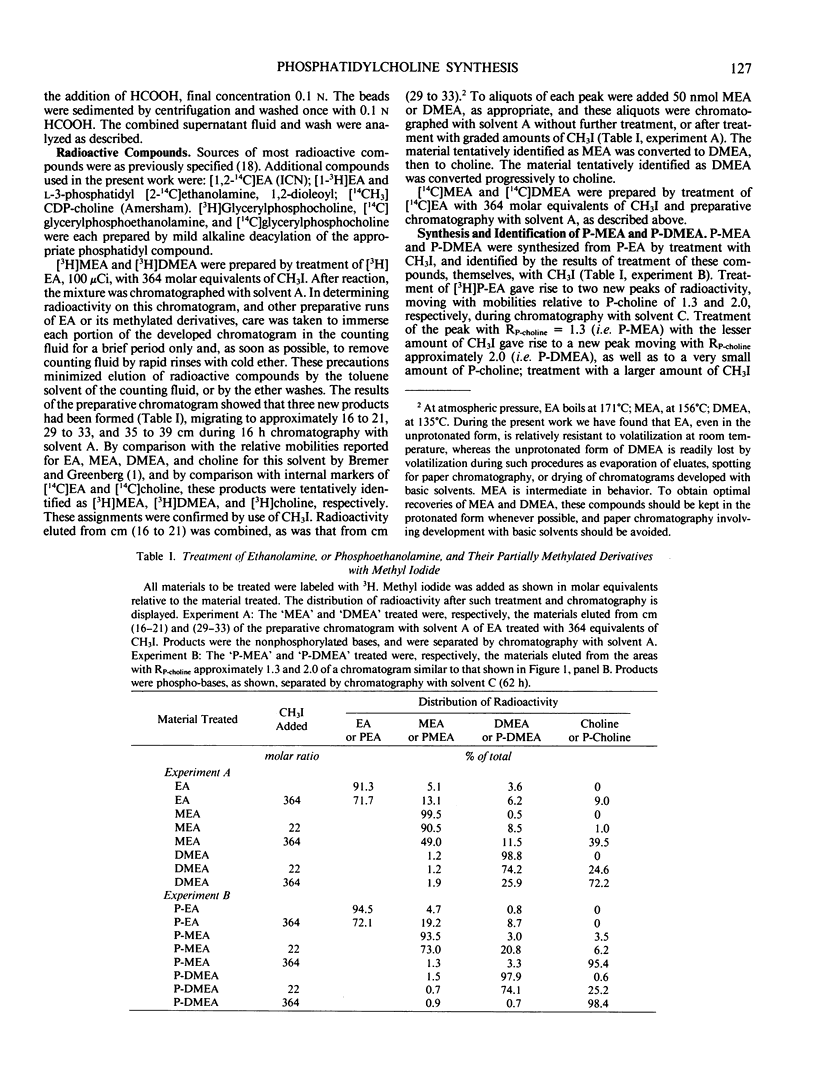
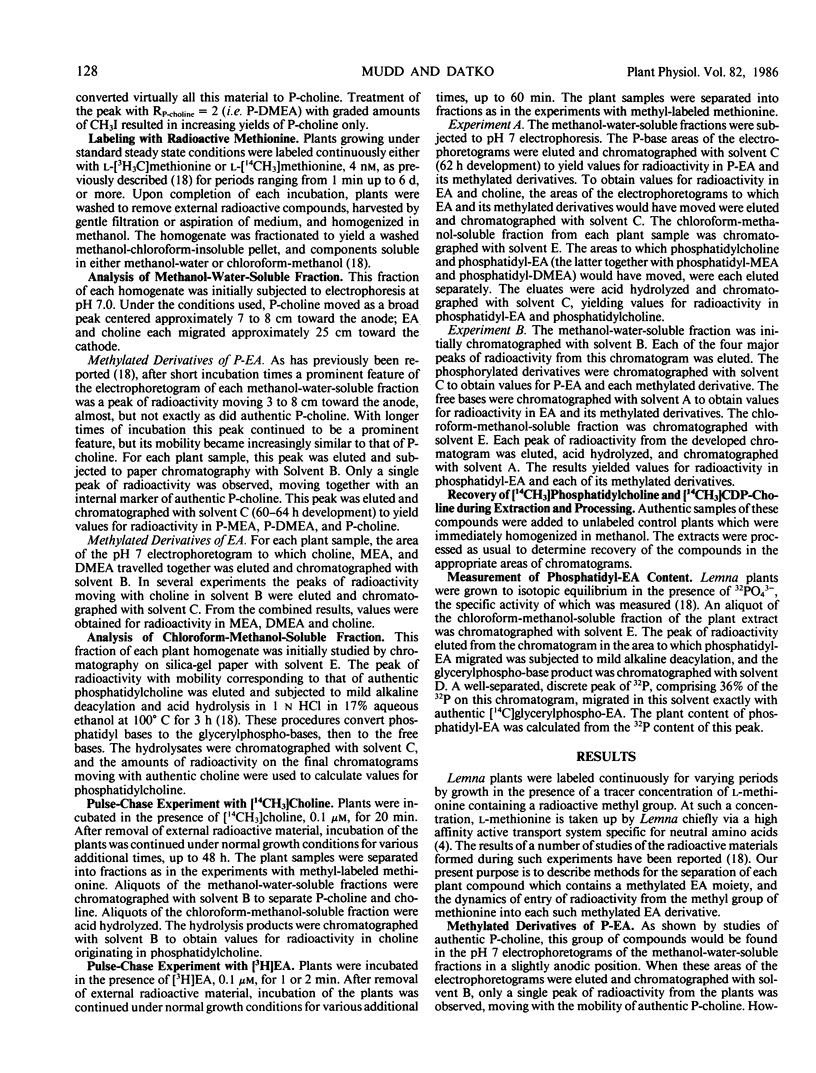


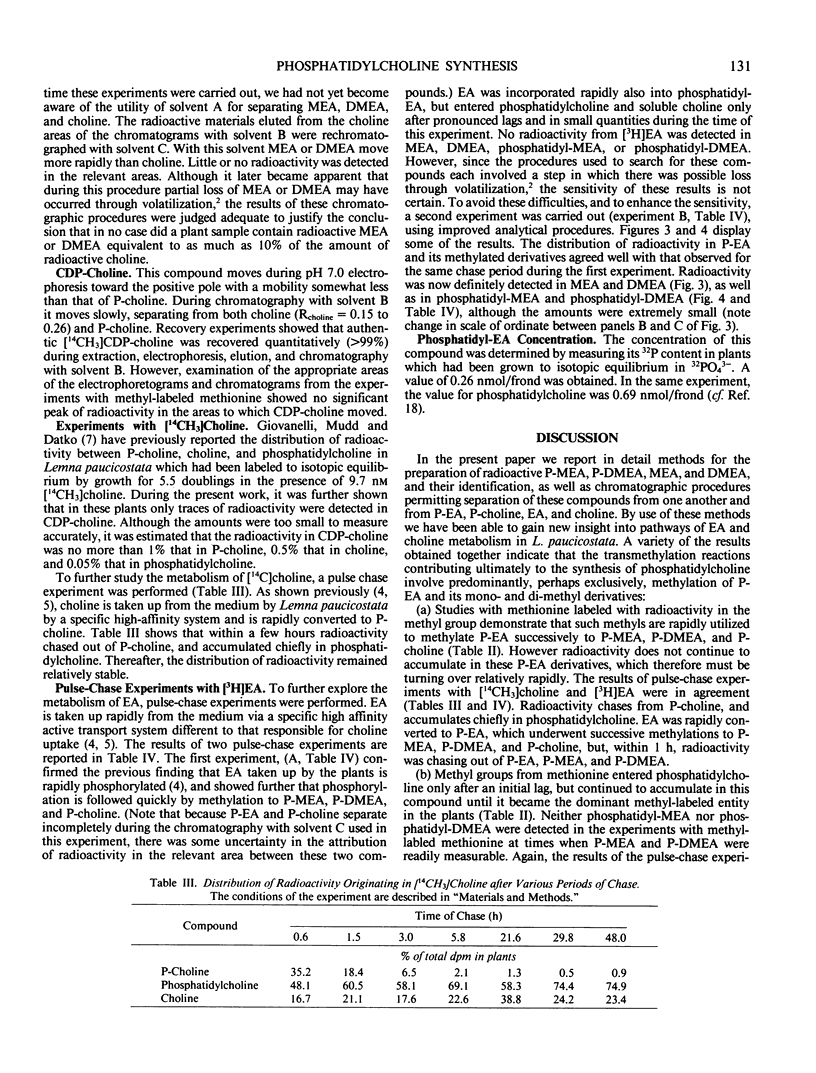

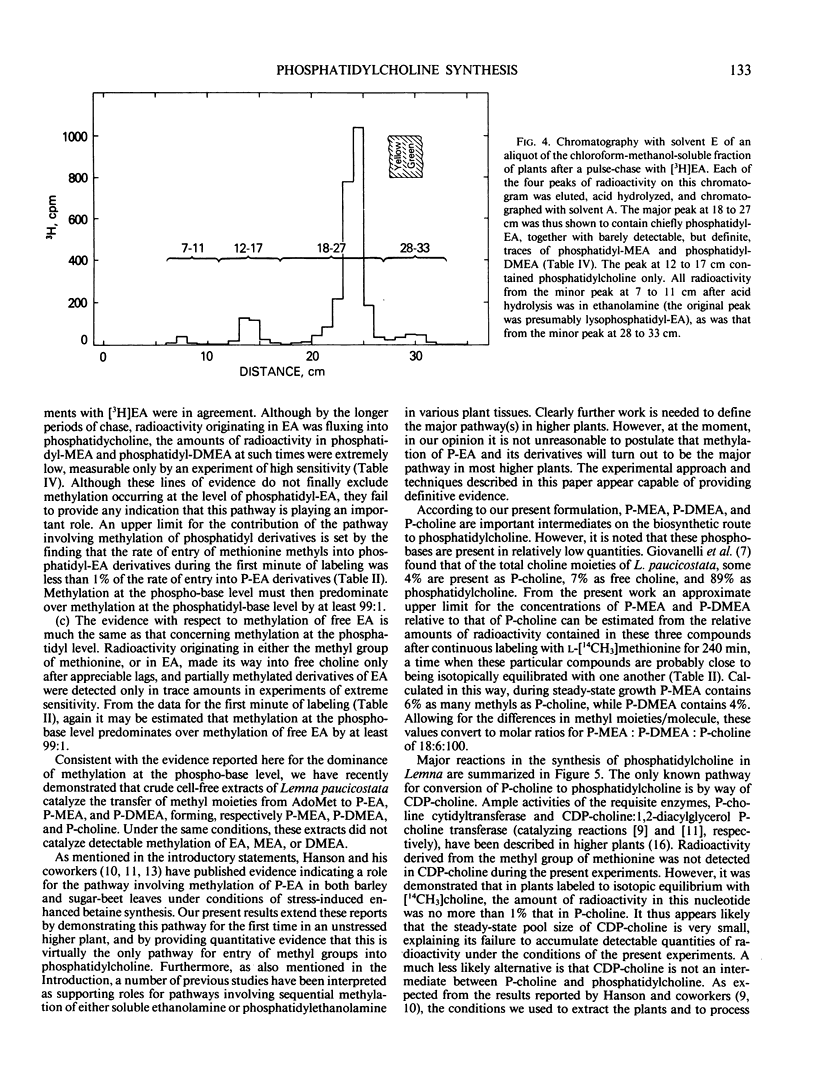
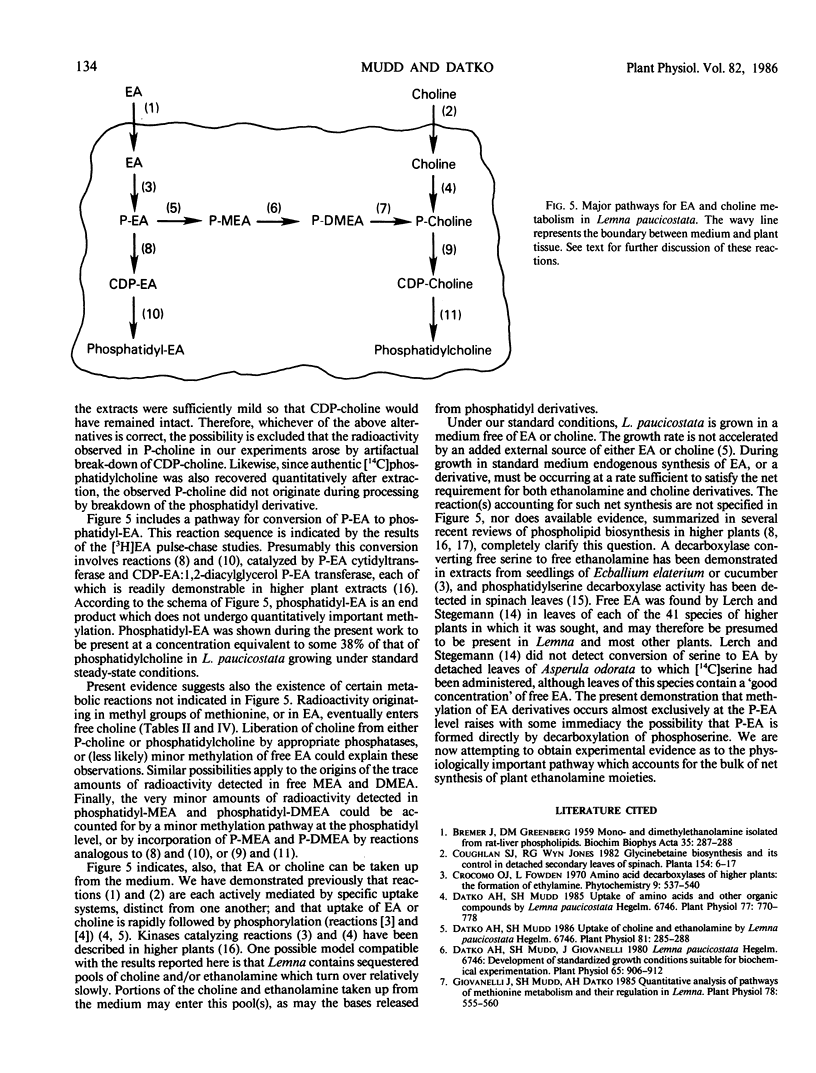

Selected References
These references are in PubMed. This may not be the complete list of references from this article.
- BREMER J., GREENBERG D. M. Mono- and dimethylethanolamine isolated from rat-liver phospholipids. Biochim Biophys Acta. 1959 Sep;35:287–288. doi: 10.1016/0006-3002(59)90375-0. [DOI] [PubMed] [Google Scholar]
- Datko A. H., Mudd S. H., Giovanelli J. Lemna paucicostata Hegelm. 6746: DEVELOPMENT OF STANDARDIZED GROWTH CONDITIONS SUITABLE FOR BIOCHEMICAL EXPERIMENTATION. Plant Physiol. 1980 May;65(5):906–912. doi: 10.1104/pp.65.5.906. [DOI] [PMC free article] [PubMed] [Google Scholar]
- Datko A. H., Mudd S. H. Uptake of Amino Acids and Other Organic Compounds by Lemna paucicostata Hegelm. 6746. Plant Physiol. 1985 Mar;77(3):770–778. doi: 10.1104/pp.77.3.770. [DOI] [PMC free article] [PubMed] [Google Scholar]
- Datko A. H., Mudd S. H. Uptake of Choline and Ethanolamine by Lemna paucicostata Hegelm. 6746. Plant Physiol. 1986 May;81(1):285–288. doi: 10.1104/pp.81.1.285. [DOI] [PMC free article] [PubMed] [Google Scholar]
- Giovanelli J., Mudd S. H., Datko A. H. Quantitative analysis of pathways of methionine metabolism and their regulation in lemna. Plant Physiol. 1985 Jul;78(3):555–560. doi: 10.1104/pp.78.3.555. [DOI] [PMC free article] [PubMed] [Google Scholar]
- Hanson A. D., Rhodes D. C Tracer Evidence for Synthesis of Choline and Betaine via Phosphoryl Base Intermediates in Salinized Sugarbeet Leaves. Plant Physiol. 1983 Mar;71(3):692–700. doi: 10.1104/pp.71.3.692. [DOI] [PMC free article] [PubMed] [Google Scholar]
- Hanson A. D., Scott N. A. Betaine Synthesis from Radioactive Precursors in Attached, Water-stressed Barley Leaves. Plant Physiol. 1980 Aug;66(2):342–348. doi: 10.1104/pp.66.2.342. [DOI] [PMC free article] [PubMed] [Google Scholar]
- Hitz W. D., Rhodes D., Hanson A. D. Radiotracer evidence implicating phosphoryl and phosphatidyl bases as intermediates in betaine synthesis by water-stressed barley leaves. Plant Physiol. 1981 Oct;68(4):814–822. doi: 10.1104/pp.68.4.814. [DOI] [PMC free article] [PubMed] [Google Scholar]
- Mudd S. H., Datko A. H. Methionine methyl group metabolism in lemna. Plant Physiol. 1986 May;81(1):103–114. doi: 10.1104/pp.81.1.103. [DOI] [PMC free article] [PubMed] [Google Scholar]


